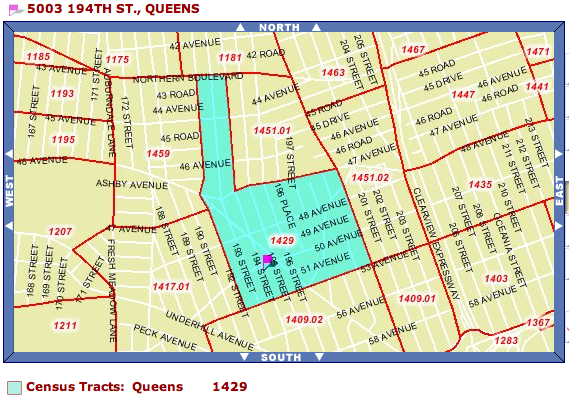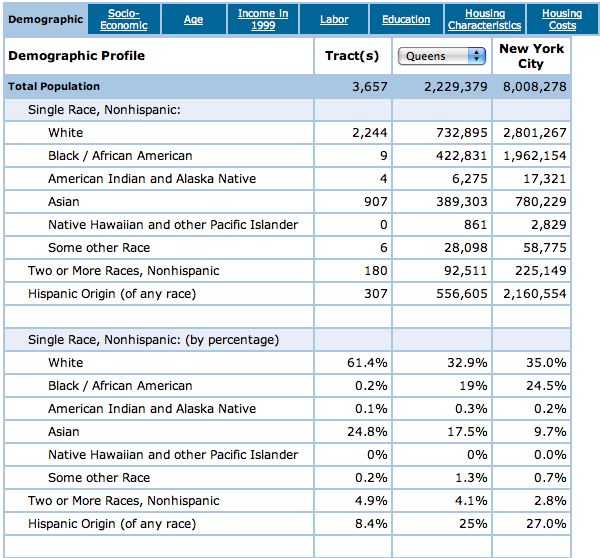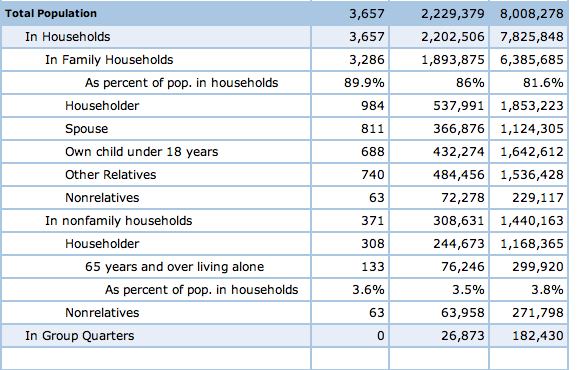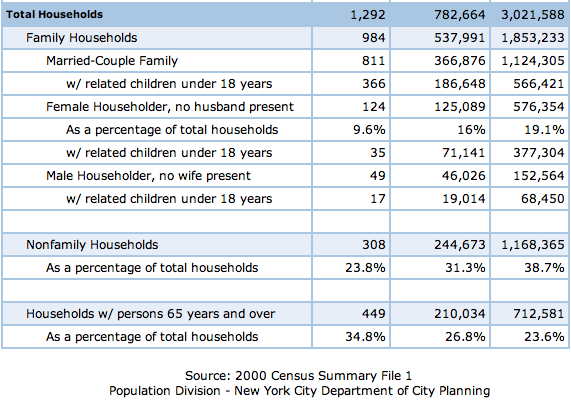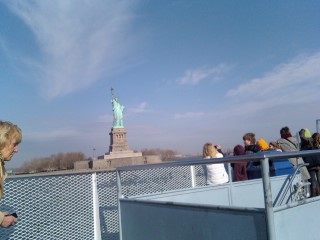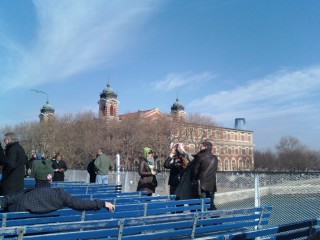From The Peopling of New York City
Contents |
Dong Hyeok Lee (Duke Lee)
About Me
My name is Duke Lee, sometimes going by my legal name, Dong Hyeok. I currently attend Baruch College, graduating from Francis Lewis High School in Fresh Meadows, Queens. Fresh Meadows is also the neighborhood I am currently residing in. I was born in Incheon, South Korea in 1990, a large city not too far from the capital of Seoul. Spending my toddler years in Seoul, our family moved to New York City in 1996.
I love to watch and play sports, my favorites being football, volleyball, and basketball. Playing football and basketball as hobbies with friends on our spare time, I played volleyball for my high school for four years. Making it into quarterfinals in New York City in my senior year, it was probably the highlight of my short volleyball career. My favorite sport teams are the Giants, Mets, and the Knicks, being a loyal New Yorker. I hate the Jets and the Yankees, also having to be loyal to my Giants and Mets.
I also enjoy music. Growing up in a musical household, both my parents being vocal majors in college, I learned to play piano since I was young but never really enjoying it. I started to play the guitar since 7th grade and started learning by myself. I then re-picked up the piano in my sophomore year in high school but was a little rusty with my skills.
Ideal Community
In my ideal community, we would have monthly block parties where people in the whole neighborhood gets together and socializes. We would play games, eat good food, and get to know each other. Everyone would be friendly with one another and just keep each other accountable. We would greet each other every morning and ask how the day was at night. It would also have a nice environment where every house has nice cut gardens with a lot of blooming flowers. There would also be many different types of free services where people can go to whenever. One would be a library where children and adults alike would go study and read books or magazines. It would be big enough to give everyone space and clean that it would be a good place to go whenever someone has free time. There would also be a fire department around the corner and be ready 24/7 for any types of accidents. There would also be a police precinct so that it will be ready for any types of crimes even though my ideal community will have no crimes. There would be a huge park right in the middle of the neighborhood where anyone can go to on a nice day and play sports or have a picnic. It would have a lake in the middle of the park where children are always feeding the ducks and the fish. There are many restaurants and markets so that the people have a lot of places to choose from. The waiters at the restaurants and the cashiers at the markets are very friendly to the people that they serve.
Immigration Film Clip
I picked this clip from "Border: the Movie" because I thought that this movie was relevant to what we were learning with immigration and at the same time showed the problems we are facing with illegal immigration in the United States. Illegal immigrants are easily seen in the streets of New York City. In the streets of Flushing, Queens for example, are home of many illegal Mexicans who look for work every morning. The study of the immigrants has to include the study of the illegal immigrants as well. According to statistics, there are 12-20 million illegal immigrants living in the United States and maybe even more because the exact number is unknown. Also, there were more illegal immigrants coming in to the United States than legal immigrants since 1990.
In the movie trailer, it focuses on the current dangers of the Southern border between the United States and Mexico. It tells us that these illegal immigrants crossing the border are not just people who are searching for a better life but some of these are criminals and even terrorists. It portrays the great dangers they can bring into this country if they are easily able to cross the border. It is like a war right now on the border, because both US and Mexican officials are both trying to stop illegal immigration between these countries. It is like a war right now down there because many people are dying trying to go to the other side. This movie shows how the United States can be endangered and harmed by the many illegal immigrants in this country.
From There to Here
I was born in Incheon, South Korea in 1990, which is one of the biggest cities on the west coast of Korea. It is also home of a major seaport in Korea. My family and I moved to Seoul, the capitol of Korea at the age of two. These two cities are not too far from each other, and are even connected together by the subway stations. It was there where I attended Pre-School and part of Kindergarten. We lived in Seoul for four more years before we went over to the United States.
My family and I moved to Bayside, Queens in 1996, leaving everything behind and ready to live a new life in the United States. My little brother was two at the time. As soon as I arrived, I immediately attended Kindergarten in the elementary school, PS 203. My parents’ plans were to just stay for 5 years for my father to study and go back to Korea. However, this did not happen because he established a career here in New York because he had to support the family. He had to stop going to school after a year because of the tough financial status we were in. My mother having to stay home to take care of me and my brother, my father had to work even harder to support the household. The first years living here were harsh, starting off with nothing. Both of my parents went to a college for music so they did not have enough skills for anything else. My parents did not speak a bit of English and the language barrier made it even harder. We moved to Flushing in 1998 and spent most of my life there. It was there where I did most of my growing up as a growing adolescent. We lived in Flushing for about 9 years and moved to Fresh Meadows in 2007. I was a junior in high school when we had this move and it was better since it was closer to my school, Francis Lewis. By this time we were somewhat established financially because both of my parents now had steady jobs. They learned to speak more English even though they are not yet fluent. However, I was old enough to help my parents in anything they had trouble with because of the language barrier.
Our family received our permanent residence, or green card, in 2000. Luckily it was before the 9/11 attacks and quickly received it compared to other people. My parents obtained their US citizenships in 2008; my little brother luckily got it as well due to his age but I had to take the test myself being 18 at the time of their citizenship interview. I finally obtained my citizenship in April of 2009 after 13 years of living in the US.
We are the first family of both my mother and father’s side to immigrate to the United States or any other country. Even to this day, all of my relatives are living in Korea thus having no sense of how it is like to grow up with relatives.
Neighborhood Census Tract
Where I live in Fresh Meadows, Queens, and the total population is 3,657 according to the 2000 census. This part of Fresh Meadows is mostly white, making up 61.4% of the total on the part of Fresh Meadows where I live. The next race that makes up the next highest percentage are the Asians, which makes up almost 25% of the total. The rest of the total percentage is split up by African Americans, Hispanics, and etc. Most of the people living here are in family households (about 90%) and the other 10% lives in nonfamily households.
This part of Fresh Meadows has a fairly large percentage of foreign-born residents, making up 38.5% of the total population. The median household income for this tract is $64,844 and the median family income is $70,570. However, there are still 141 people and 24 families in this tract that are below poverty level. The median age for this part is 40 and 80% of the population is over 18 years old.
Class Notes
February 6, 2009
IDEAL COMMUNITIES
1) interact peacefully
total acceptance of diversity
public services
clean transportation
amenities
groceries, etc.
2) diversity
community events together
respect each other
no mention of schools
self-sufficient
green
3) care about each other
not concerned with materialism
work toward common goals
healthy
CLASS AS A WHOLE)
collaboration
solidarity
diversity
Next Week:
• Discussion of Joe Salvo’s lecture.
• Census tract project in class. Find your census tract and look at census data for your census tract as your neighborhood.
February 13, 2009
Pull Factors – factors that drive people to places (NYC) because of its positive values
• Resources – seafood
• Social diversity
• Shopping Mecca
• Culinary arts
• Climate
• Economic opportunities
Push Factors – factors that drive people to places (NYC) because of the negative values in their own places.
• Boredom
• Religious persecutions
• Lack of economic opportunities
• Politics
• War
Next Week:
• Go to your district/small district and see what you think is interesting and add it onto your wiki.
2/27 – NPS Morgan Smith. Special tour @ 11 in Ellis Island
3/6 – African Burial Ground
3/13 – Lower East Side Tenement Museum
Joseph Salvo – Director of Population
http://www.nyc.gov/html/dcp/html/census/popdiv.shtml
http://gis.nyc.gov/dcp/pa/address.jsp
http://www.nyc.gov/html/dcp/html/lucds/cdstart.shtml
February 20, 2009
Im/migration in movies
1) Hope
Fear
Desperation
Statue of Liberty
Abandonment
2) Push
Social status change
High expectation – disappointment
Connection to family
Tedious process
3) Emotional influence – emoting
Disadvantageous circumstances
Optimistic outlook
Culture shock
Landmarks
Next Week:
• Get to Ellis Island by 8:30 for the 9am ferry.
General Theme for Class
How are im/migrants to NYC (America in general) visually (and otherwise) represented in history, sociology, journalism, art, movies, television, museums, etc?
There to Here essays
US Census Data and Reports
Books: Krase, Glazer and Moynihan, Berger, Foner, Riis, & articles
Newspapers
Films
National Park Services Sites
Cubans - no designated "Little Havana" in NYC
Foreign stock - people with parents born in another country Native born - born in the US
Other migrants - relatively short periods of time (tourists, work, athletes) Mexicans who pick fruits, send money back home
Immigrants - Irish, Germans, Asians 1950s large number of Eastern European displaced persons
-viewing of immigration film clips-
--watch what the actors are wearing - what the film is trying to say about immigrants
(Im)migrants in Film: Similarities in Depictions 20/9/09
1. Emotion influences the (im)migrants’ decisions: sadness (loss of home/cultural identity), grief (over death or faltered relationships), indignation (at deplorable settings, such as a workplace).
2. Attempt to ameliorate disadvantageous circumstances: poverty, lack of money, reunite with family.
3. Optimistic outlooks are common to (im)migrant characters.
4. Transition into new society is not smooth: “culture shock,” anxiety over legality (drug trafficking),
5. (Im)migrants use landmarks as a symbol of their new locales (JFK Airport, Ellis Island, Statue of Liberty).
March 13, 2009
- National Park Service • Ellis Island • African Burial Ground • Tenement Museum - Research • Census tracts • Books/readings - Media • Film clips/movies • Student videos • News • Music - Our Class • Course descriptions => goals • Biographies
Sections Methods
NPS Design
RESEARCH Visual (video, photography)
Media Text/editing
Our Class Audio
March 20, 2009
What is assimilation? - of culture: is that immigrants come to American society with their own culture and structure (language, food) and they “assimilate”, or dissolve into American society and they become the heart of America as a solution - Becomes a “Melting Pot” (assimilation) - Also called Anglo-conformity, the biggest ingredient are Anglo-Saxons who has the biggest influence and largest in number - American society is also a “Stew Pot” or “Salad Bowl” - Stew Pot – accommodation. Do not lose everything but change a little to the American Society (cultural pluralism).. small common culture but still keep their own cultural identity - “Beyond the Melting Pot” talks mostly about cultural pluralism. Not really assimilating fully into American culture but immigrants keep their own traditions while changing a little into Americans - Salad Bowl – everything is distinct (multiculturalism). People retain their own culture and does not change and not become like the rest of America (this is the complete opposite of assimilation) - Stew Pot (cultural pluralism) is the most likely thing to happen to immigrants and even to families that are here for generations. The two extremes (assimilation and multiculturalism) is not likely to happen
March 27, 2009
Accesibility • Accuracy • Reliability • Validity Social Sciences • History • Sociology • Political Science - Mass Media - Journalism
Assimilation in the classroom • Field trips • 3 books
Melting Pots ⇒ themes, ideologies • Before 1970. Mostly about politics o Puts it in an historical order • Science – is • Ideology – ought to be Foner ⇒ post 1965. New immigrants
Midterm • Comparisons: groups, themes, authors
May 1, 2009
Individual meetings next week … work on website/wiki Craig Presentation week after Last class meeting at my house date of final exam Last day for submission of all work-end of finals
REPRESENTATIONS
Im/migrants Images – photography still images Moving images Sample surveys Whole material – selecting Field trips There to here essays Three books Census data Mapping
Field Trip Notes
a picture from the boat going to Ellis Island
a picture of the Statue of Liberty on the way to Ellis Island
a picture of Ellis Island from the boat
Ellis Island
Some of the things we were able to see at Ellis Island:
Baggage – the immigrants’ lost baggage
Registry Room
Data of immigrants - where they came from - when they came
Names of the people who came through Ellis Island
Facts:
Immigrants were forced to show at least $25 so that they know the immigrant is not poor.
Many immigrants received new “American” names that sounded somewhat like their original name.
Language barriers were tough on both the immigrants and the people taking the immigrants. Many interpreters were present at the time.
There had to be money exchange so that the immigrants can change the money that they brought from their home countries to US dollars.
African Burial Ground
Works we saw at the African Burial Ground:
The New Ring Shout
By Joseph Depace, Estella Conwill, Houston Conwill
- this big work of art to show unity between nations, with the use of many different languages and the unity between religions showing the signs from each of the three main religions
Unearthed
By Frank Bender
- this sculpture showed three African Americans from different generations holding hands to show unity
Renewal
By Tomie Arai
- this huge mural shows many different events that happened in the 18th and 19th century in American History
Africa Rising
By Barbara Chase-Riboud
- this tall sculpture shows how the Africans came to this country and it symbolized the struggles they had to go through while they were here
Midterm
Theories and ideologies of im/migrant adjustment to American society.
Almost everyone living in New York City can see how immigrants affect American society. It is evident that New York City is no longer run by a small number of ethnic groups. In almost any block you are on in New York City, we see signs of many different ethnic groups running restaurants, delis, stores, etc. As we walk around the neighborhoods all around the five boroughs, it is easy to see that immigrants have come from many different countries. However, all of these different groups did not assimilate to America and New York City in the same way. There are some main theories and ideologies these different groups have as they adjusted to American society.
The first theory and ideology of how im/migrants have adjusted to American society is the “melting pot”. This term is used to explain full assimilation of many different ethnic groups into one culture. One example of the “melting pot” is found in the book The World in a City written by Joseph Berger. In the chapter “Melting Together in Ditmas Park”, it talks about how many different ethnicities are currently residing in Ditmas Park, Brooklyn. All different kinds of races live together in Ditmas Park such as whites, blacks, Asians, and Latinos. Unlike other neighborhoods with many different ethnic groups like Astoria where Greeks, Brazilians, and Arabs all live in different sections, all the different groups in Ditmas Park share the neighborhood together. Another reason why this neighborhood is a good example is because no one ethnic group is dominant so it does not give more representation to only one ethnicity. Beside the great variety in ethnicity between the people, there is also a huge variety in economic class. One woman quoted from the book that lives in Ditmas Park says that “The reason why this works is there’s no majority of one – there’s a majority of many.” As a result of the many different ethnicities in Ditmas Park, cross-cultural friendships is common, which is hard to find in other parts of New York City by middle aged and elderly immigrants.
Another theory and ideology is called the “stew pot” which refers to cultural pluralism. This term means that immigrants do not totally lose their own cultural identity, but change a little into the American Society. An example of this can be found in the book Beyond the Melting Pot written by Nathan Glazer and Daniel P. Moynihan. In their chapter entitled “The Jews”, it explains the history of the Jewish immigrants and how they coped with the American life. The Jews were discriminated against in American for a long time because of their rapid economic rise. This prevented many Jobs for others in America. Even though discrimination lessened after World War II, it still went on in some places and this is probably the reason why so many Jews were not able to assimilated into the American life. Intermarriage, which can give us a strong sense of how one group assimilates into America, was also low among the Jewish population.
The third and last theory and ideology is the “salad bowl” or multiculturalism. This means that immigrants keep their own culture and does not change at all to American life. In Nancy Foner’s From Ellis Island to JFK, we see that she explains the “salad bowl” as the different immigrant groups to having specialties in specific jobs. The Koreans for example, tend to own grocers and supermarkets. Other groups such as the Jews became shopkeepers and the Chinese had their restaurants. Being the complete opposite of assimilation, this is highly unlikely to happen especially if the family has been living in America for generations. Also, complete assimilation, or the “melting pot”, is highly unlikely as well because people tend to keep their own cultures from their home countries. Cultural pluralism, or the “stew pot”, is the most common among immigrants because they keep some of their cultures but still change a little into Americans.
Is attaining the status of “whiteness” the threshold for being “American”?
America’s majority is Caucasian, so it is not surprising when some feel that immigrants need to have a certain level of “whiteness” to be American. The level of “whiteness” some immigrants might think they need to reach is not only in terms of color but also the feeling of being part of the American culture. However, I disagree with this because minorities play a huge role in the United States, especially now with our new partly African-American president. It is also very important in New York City, which is home to one of the most diverse cities in the world. I think that even if minorities keep their own culture and don’t have a certain level of “whiteness”, they will still be successful and American. However, I think that many would disagree with my opinions in the early 1900’s where the first huge wave of immigrants moved to the United States. Because of the racism and discrimination against people of color, being “white” was very important to them.
In the book From Ellis Island to JFK written by Nancy Foner, the author focuses on the differences between the old and new immigrants. Throughout the book she gives many examples on how the old and new immigrants were so different. These differences gave way to the different thoughts they had about assimilation to the United States. The old immigrants were mostly European, who were all white by color but still faced discrimination from earlier settlers. In order to try to fit in with the rest of the country and their respective neighborhoods, they had a sort of pressure in trying to have a high status of “whiteness” in order to become more American. Since many of these old immigrants came to the United States with no skills and education, it was hard for them to find good work. They were forced to live in small and run down homes. This is another reason why they wanted to become more American, because they wanted to be in a higher economic class.
However, I don’t believe this is true anymore because new immigrants tend to stay loyal with their countries that they came from. As stated in the book, people came from many Spanish-speaking and Asian countries which led to New York City to become so diverse. Also, most new immigrants who come to the states are from middle class families. Many of these new immigrants are educated with college degrees or graduate schools and have skills that they can contribute to businesses in the United States. For example, in the book The World in a City written by Joseph Berger, it talks about the Koreans living in the Douglaston-Little Neck area. The Koreans in this area have own many restaurants, delicatessens, and supermarkets. They tend to sell to their own people, one because they don’t speak English and two because most of them just has strong cultural ties. Many Koreans come from decently established families in South Korea and immigrate to the United States with dreams to live luxurious lives. Because of their decent economic class, many of the Koreans and other immigrants who feel this way do not feel that they have to have a status of “whiteness” to be American because they already feel that they are American in their own ways already.
In my own opinion, I don’t believe that attaining the status of “whiteness” the threshold for being American. America is a very diverse country, because of all the people that immigrated to America. However, this might not be the thinking process for old immigrants at the turn of the twentieth century. Because they were living in times of discrimination and racism, it was probably hard for them to be living in their own skin. Also, with their low economic status, it was probably even harder. However, times have changed and the new immigrants brought more to America. With their economic stability and skills, they easily got used to the American life. With a better lifestyle compared to the old immigrants, they did not feel the need to be “more white” in order to feel American. They were comfortable with keeping their old cultures. The level of “whiteness” shouldn’t be how people judge each other on how American one might be. I believe that when people still keep their own cultures but also contribute to the American society, then they are truly American.

